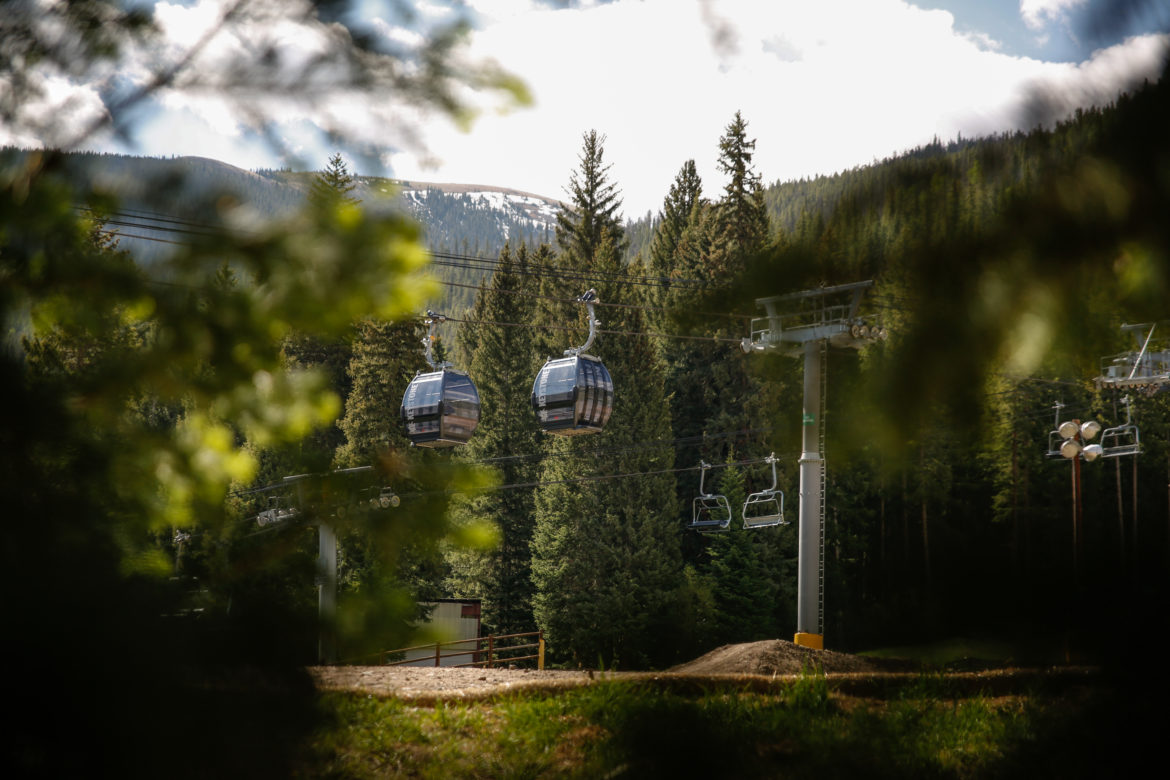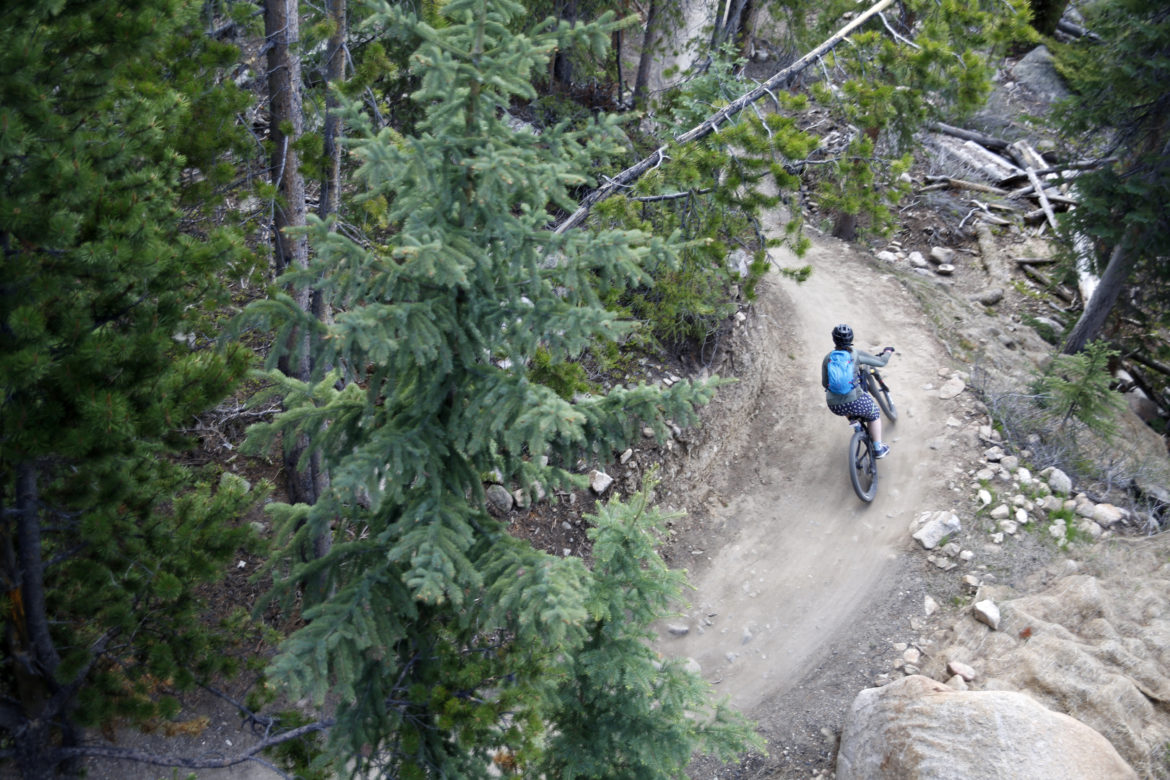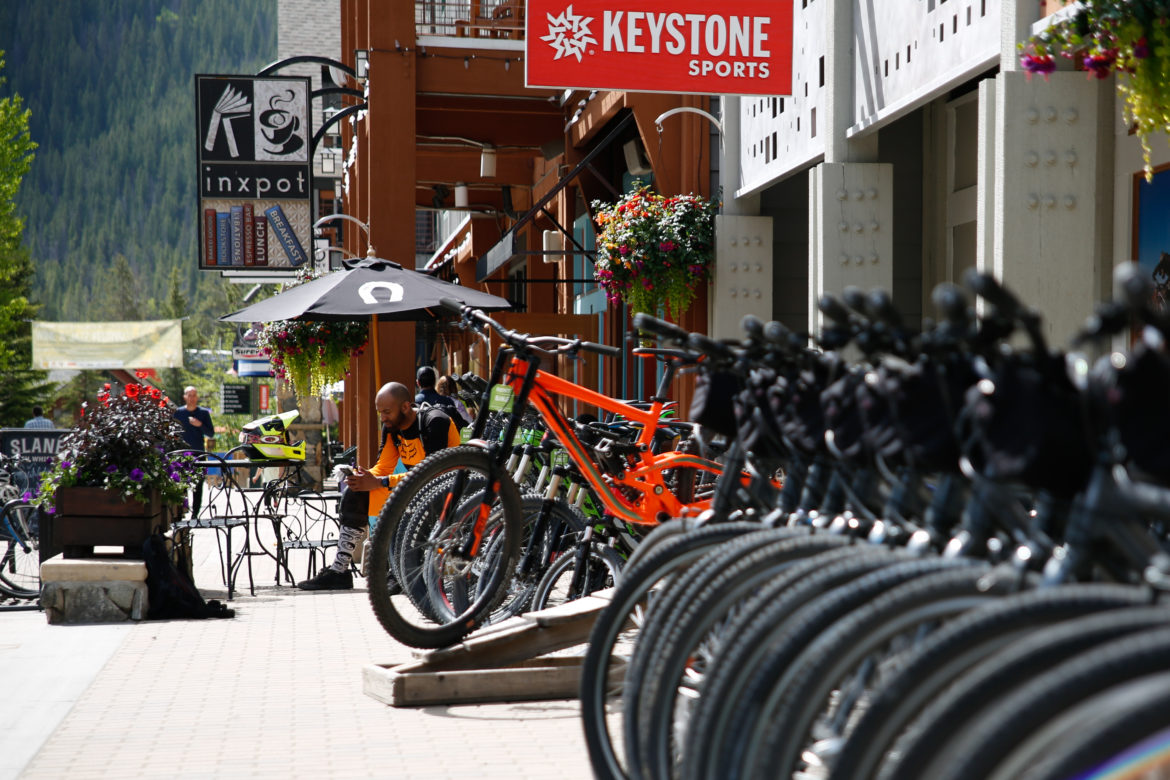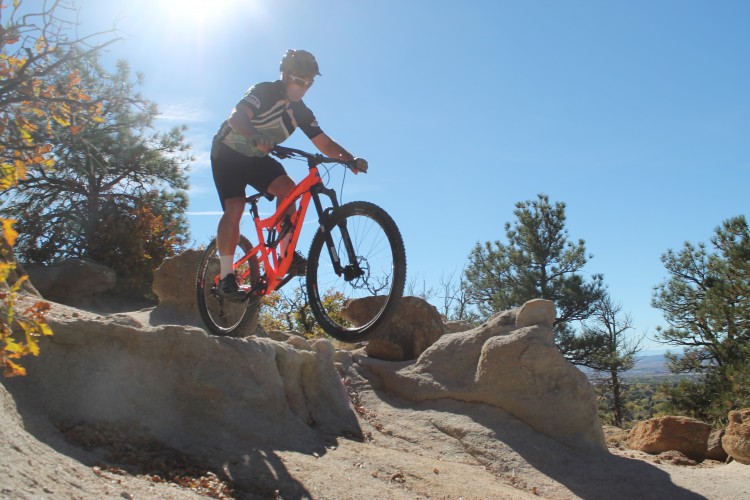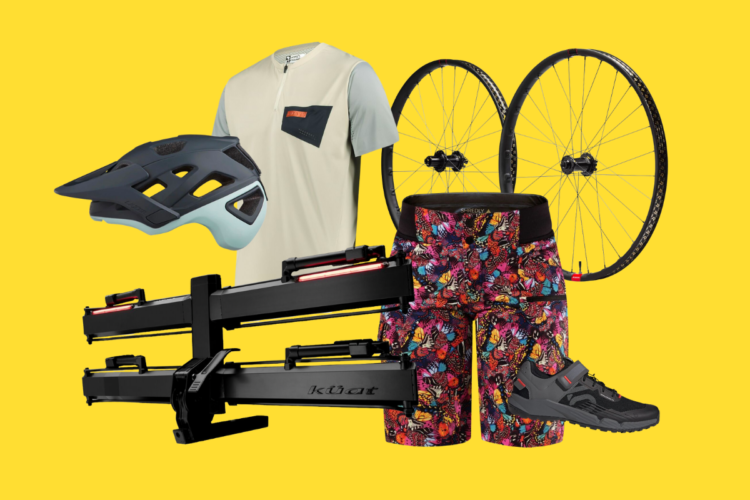
The bike parks closest to Denver, Colorado each have their own reputation. Trestle Bike Park has endless, fast and buff flow trails. Granby Ranch has a smaller friendly mountainside resort, with raw, tight, and twisty downhill trails. Keystone’s bike park is easily distinguishable. The scenery is different from both resorts mentioned above, with more tree cover and deeper forests.
Keystone’s trails maintain a natural feel, mixed with various wooden freeride features and are buff as the mountain’s rocks and roots allow them to be. While there are rock walls, steep trails, and roots for advanced riders to spend all day figuring out, there are also smooth, fun, and flowy trails for beginners to spend the day conquering.
The Keystone Bike Park usually opens around the middle of June and stays open through most of September. The number of trails available near opening day can be low, but the resort knocks half off the price of lift tickets when pickings are slim, so riders can hit the lower half of the mountain all day for about $25.

This was the case when my girlfriend and I went in June after a heavy winter and a weird June snowstorm that delayed trail openings longer than usual. A few days after the snowstorm, however, Summit County was back in the 70s and the trails were dry on the lower half of the mountains.
During my visit in June, the Keystone Bike Park crew was still shaping the jumps at the bottom of the mountain and shaping up the trails for the season. If you want to ride the entire mountain, it’s best to wait until July when everything’s open.
We checked out a few rental bikes from Keystone Sports while I got a little work done on my bike. Keystone Sports offers trail bikes, enduro bikes, freeride bikes, and downhill bikes to rent, however you must rent a freeride or downhill bike if you want to take it on the lift.
The freeride bikes are older Scott Voltage FRs, an over-forked-feeling single crown and coil shock-equipped bike that is made for bike park trails — or freeriding.
For downhill bikes, some of their offerings are Rocky Mountain Maidens and Trek Sessions — drool worthy, for sure.

While the bikes can handle Keystone’s rocky trails, they see a lot of hands and feet and dirt and rocks and do have some wear and tear. If you have a hard time adjusting to other bikes or want the comfort of your own, I’d recommend bringing yours along for the trip.
There’s a bit of self-pride and boasting that goes on when someone tells another that they rode a mountain bike park, whether they call it that, or downhill mountain biking, or a gravity park, or whatever. It sounds gnarly, and dangerous, and like something Evil Kneivel or Rod Kimball would have done if they took the motors off of their bikes.

Bike parks know this and resorts like Keystone understand that they can’t just appeal to the hardcore, which is why beginner trails have expanded at many resorts. It’s great for families and it’s great for getting more riders introduced into the sport and up to speed. If you spend much time at a bike park, you’ll see their efforts paying off and there are usually a lot of new riders at lift-served bike parks.

While Keystone has a reputation for being all of those things — hardcore, technical, scary, and gnarly, which it is in some places — they have more beginner, green-rated trails than any other category. Where the park lacks is actually in moderate difficulty, blue-rated trails.

Riders can still safely experiment though by walking or going around any features that may present too much difficulty. That’s part of progressing at a bike park and on the mountain bike. You’ll never know if you can ride that blue or black-diamond rated trail if you don’t go take a look and find out.

Higher on the mountain, riders can access some very technical trails like Jamrock, which is accessible via jump trails Milky Way and High Speed Dirt. The gnar continues on the lower half of the mountain with trails like Sanitarium and its infamous 14-foot-high corkscrew, or Helter and Skelter that utilize steep trails off of powerlines for tricky descents.

Single black diamond trails like Cowboy Up with its not-too-steep and spread out rock garden, or Holy Diver or Holy Roller are good places to start if you want an advanced trail on the mountain. Holy Diver and Holy Roller are flowy jump trails with big tabletops, although they are rollable and don’t require air time.
Mosquito Coast is a popular blue-rated, intermediate trail at Keystone Bike Park that everyone loves. It’s a wooded trail with a mix of machine and hand-built singletrack that flows well and unites riders of all skill levels.

Beginner trails like Beans for Breakfast introduce new riders to wooden features and others like Girl Scouts and Suz’s Cruise open up for views of Summit County as they flow through the Arapahoe National Forest.

So while you may find yourself playing with fear, with the front wheel pointed down and your index fingers crushing the brake levers on some trails at Keystone, you certainly don’t need to.
There’s enough there to take it easy for the day. Cruise the flow trails, bring a shorter-travel bike and stick to the greens and blues. Grab a post-ride beer at 9280′, rest up, and come back the next day.
Lodging and food

As Keystone is mostly a resort without much of a town surrounding it, the lodging and food options are very central to the resort village.
Keystone has quite a few lodging options within walking distance of the lifts. The River Run Townhomes are across the street from the River Run Village and have large, open spaces with living rooms and 3-4 bedrooms.
The Hyatt Place Keystone has been redesigned and has a rooftop hot tub. It is more similar to a hotel room or suite, but with an emphasis on free breakfast.
Downhill riding takes a lot of energy throughout the day also, so don’t forget lunch. We found some fun menu options at the Overlook Grill at the summit off of the main gondola, like grilled elk sausage, watermelon, and hand-squeezed lemonade.
For apres and dinner options, there are a few musts around the resort village and nearby. The Kickapoo Tavern is the closest option when you make it back down to the base. The Kickapoo is quick with beer options, chips and salsa, or burgers, sandwiches, tacos and more.
Another option that’s a two minute walk down from the Kickapoo is the 9280′ Taphouse. 9280′ has 14 beers on tap, a full menu with wings, burgers, sandwiches, salads, and happy hour from 3-6PM daily.
If you have the chance and a few spare bucks, I recommend the Bighorn Bistro just outside of the resort. We had an appetizer of caramelized goat cheese, followed by salad, pan seared scallops, and steak and potatoes. I don’t think I could have found a better recovery meal if I’d tried.











